Olympus mju 790 SW Review
Olympus mju 790 SW
If you enjoy being dropped from a height into freezing water, Olympus has just the camera for you
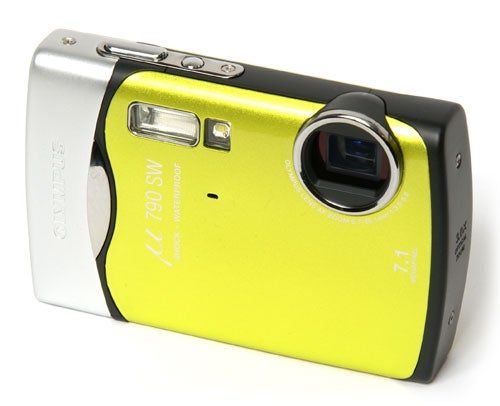
Verdict
Key Specifications
- Review Price: £170.00
Digital photography is a very fast-moving field of technology, and you don’t stay ahead in such an environment by standing still. Olympus’ answer is to update its product line with huge launches at least twice a year. For example in August 2007 it announced nine new digital cameras, including today’s review subject, the mju 790 SW. Since the launch of the original 3.1MP mju 300 Digital and 3.9MP mju 400 Digital in January 2003, there have been no fewer than 22 models in the mju range, and they have proved to be very successful. Their combination of stylish good looks, good performance, high picture quality and rugged all-weather durability have made them very popular with travellers, sports enthusiasts and anyone with an eye for quality. 
The 790 SW is a 7.1-megapixel compact camera with a corner-mounted internal 3x zoom lens and a 2.5-inch monitor. It is one of four new models in the mju range, but is the only one of those to bear the ‘SW’ suffix, indicating that it is not just weatherproof but fully waterproof and shockproof. I’ve reviewed several mju SW cameras before, such as the 720 SW, 725SW and most recently the 770 SW, and I have personally verified both their water and shock resistance. However, despite their impressive resilience, I was not massively impressed by their picture quality. Hopefully the 790 SW can improve on this record.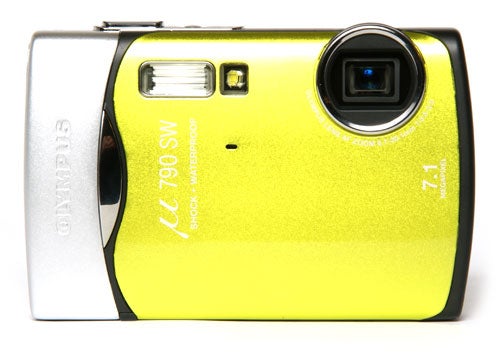
The 790 SW looks rather different to the previous SW models. The almost military styling of the 770 and 725 has been softened, and the new camera looks a lot more like a conventional pocket compact. The case is still made almost entirely of metal, and the build quality is of course exemplary, but it doesn’t look or feel anywhere near as tough as the almost indestructible 770 SW. Weighing in at 136g it is almost 20g lighter, however it is a couple of millimetres larger, measuring 93.6 x 60.9 x 21.3 mm although that is still very slim by any standard. It feels quite light for its size, but it is by no means delicate. The lens is well recessed and protected by a metal cover when not in use, the LCD screen has a scratch-resistant coating, and the main part of the camera body is finished with a hard-wearing lacquer. The 790 is available in five colours; black, silver, orange, blue and the eye-catching (to put it mildly) metallic lime green of my review sample.
The mju 790 SW is waterproof to a depth of 3m, shockproof against drops of 1.5m, and is claimed to withstand temperatures of minus 10 degrees centigrade. While the first two figures are not in doubt, that temperature claim requires closer examination. As I’ve pointed out here, most digital cameras are perfectly safe in sub-zero temperatures, as long as you take some simple precautions against condensation. There are many reports of ordinary digital cameras being used at temperatures as low as minus 40 centigrade without any serious problems. Of course being waterproof the 790 is largely immune to condensation damage, and a reading of the manual reveals that the performance of the Olympus-branded xD-picture cards and the Lithium-ion battery has been tested down to minus 10 and found to be okay. Still, like most marketing claims, it’s not really as much of a wonder as it sounds.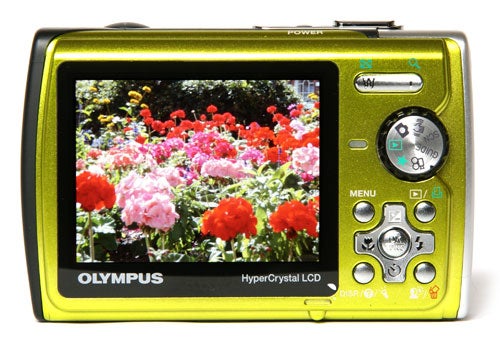
Apart from the other models in the mju SW range, as usual there is really only one rival camera with which to compare the mju 790 SW, and that is the Pentax Optio W30. Both are 3x zoom 7.1MP compacts, both are waterproof to 3m and both are compact enough to slip into a pocket. However the Pentax lacks the shockproof claim, and it has to be said that compared to the stylish mju 790, the W30 does look a bit plain. The mju cameras have always been premium products, so it’s no surprise that the 790 SW is more expensive than the Pentax, but not by too big a margin. The Optio W30 currently sells for around £140, while the mju 790 SW is currently available for around £170. However compare this with other premium 3x zoom 7MP cameras such as the Canon IXUS 75 (£135), or the Nikon S200 (£100) and it starts to look a bit expensive. I guess it depends on how much you feel you need a shockproof camera.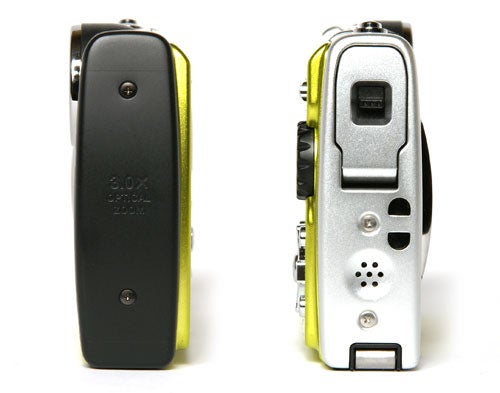
Except for from its adventure-proof design, the 790 SW is a fairly basic point-and-shoot camera with a rather limited range of features. Main shooting mode selection is via a small dial control on the back plate, positioned so that it doubles as a thumb grip. Available modes are full auto, an anti-shake mode that simply boosts the ISO setting, a choice of 23 scene modes including three underwater settings, video mode and the useful Guide mode that has appeared on a number of Olympus compacts. This is a good feature for beginners, since it acts as a live tutorial in basic photography, including automatically setting the camera to cope with unusual situations, but more experienced photographers will seldom use it. The video mode is somewhat improved over the disappointing 770 SW, since it does offer VGA (640 x 480) resolution at 30 frames per second, but only in 10-second clips. 30fps VGA video is pretty much a standard feature on most recent digital cameras, so Olympus is lagging a bit here. It’s also lagging in menu design; the 790’s main menu is just as annoying and pointlessly over-complicated as ever.
There are a couple of unusual features. One is the LED light mounted on the front next to the flash. Unlike most AF assist lamps, this one has to be switched on manually, and is bright white rather than the usual near-IR red LEDs used by most other cameras. However it does have the advantage that it can be switched on independently of the camera, so it can be used as a torch. Given that the 790 SW is aimed at outdoor enthusiasts this is a very useful feature. The other unusual feature is something called Fine Zoom, which is found in the main menu. It is yet another variation on our old friend Digital Zoom. It simply enlarges the centre section of the sensor image to give the illusion of extended optical zoom, but at greatly reduced image quality.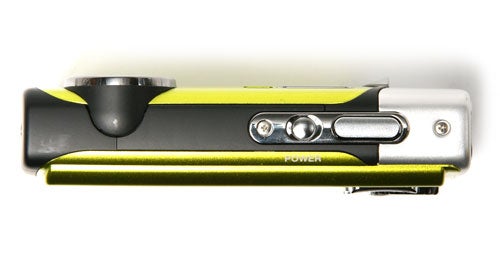
The camera’s overall performance is actually very good. Thanks to the non-extending zoom lens it starts up very quickly in under 1.5 seconds and shuts down again even more quickly. In single-shot mode at maximum image quality it can shoot once every 2.2 seconds, which is toward the faster end of average, while in continuous shooting mode it can shoot at approximately one frame a second. The specification sheet for the camera states that it can only manage 1.1fps for three frames, but I found that using the faster xD Picture card Type H it was able to maintain 1fps until the card was full. Likewise the 3MP-only high-speed continuous mode was able to maintain 3.5fps indefinitely using a Type H card, instead of being limited to an 11-frame burst with the larger but slower Type M cards.
The AF system is a big improvement over some earlier Olympus models, and focuses very quickly and reliably in good light. It slows down a bit in reduced light, taking about a second to lock on, but it will focus reliably in a dimly-lit room, and the manually-activated AF lamp/torch is bright enough for reliable focussing at a range of about five metres in the dark. In fact it is even bright enough to light the photo, handy if you don’t want to use the flash. Olympus’ Bright Capture technology, which enhances the monitor view in reduced light, makes low light shooting much easier.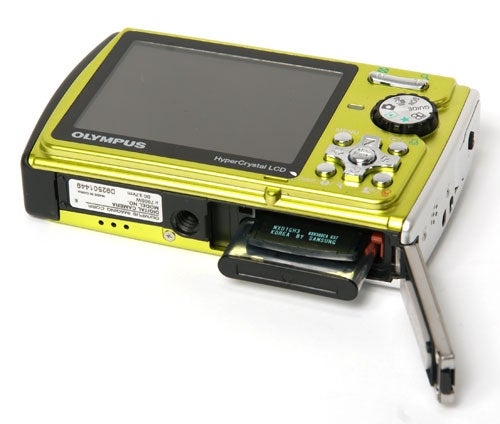
I was somewhat disappointed by the image quality of the previous mju SW models, but fortunately there seems to have been a dramatic improvement in this area for the 790. The lens appears to be the same 10-element f/3.5 – 5.0 unit used on the 770 SW and 725 SW, but here it produces noticeably less barrel distortion at the wide-angle end, in fact virtually none at all. It does still suffer from slight corner softness, but the centre detail is excellent. Overall image quality is among the best I’ve seen from a 7MP camera, with superb colour rendition, extremely good exposure metering and good dynamic range. In SHQ mode JPEG files average around 2.5MB, which is a little on the small side, but there were few compression artefacts visible. In the default HQ mode the files are around 1.5MB, but there are noticeable artefacts in plain colour areas. Noise control isn’t perfect, but it is about average for a small-sensor compact, with usable image quality at 400 ISO, and just about passable at 800 if you’re not too fussy. All in all a good performance, and a camera that will not disappoint any adrenaline-junkies who buy it.
”’Verdict”’
The Olympus mju 790 SW is a welcome return to form for a series that has seen some image quality and performance problems. It offers a simple specification and basic feature set for the price, but apart from the disappointing video mode it performs well and is capable of taking high quality pictures in situations that would defeat most other cameras. If you’re looking for a stylish compact that you can take almost anywhere, the 790 SW is the ideal choice.
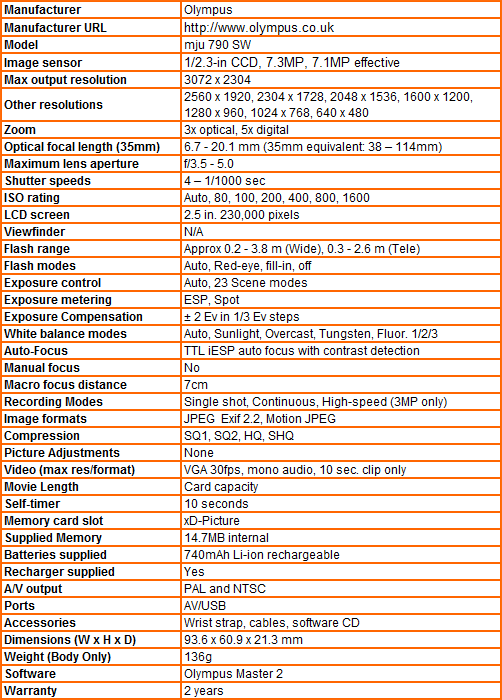
”Over the next few pages we show a range of test shots. On this page the full size image at the minimum and maximum ISO settings have been reduced to let you see the full image, and a series of full resolution crops have taken from original images at a range of ISO settings to show the overall image quality.”
—-
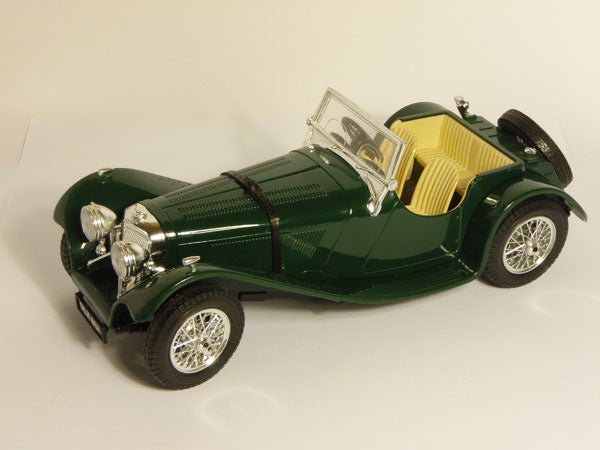
This is the full frame at 80 ISO.
—-
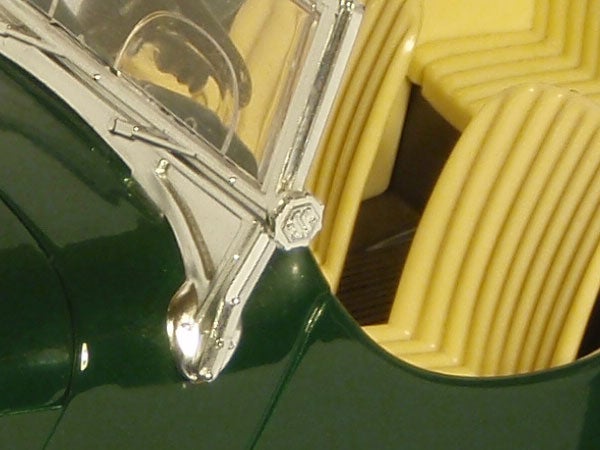
At the minimum ISO setting the image quality is very good, with no visible noise.
—-
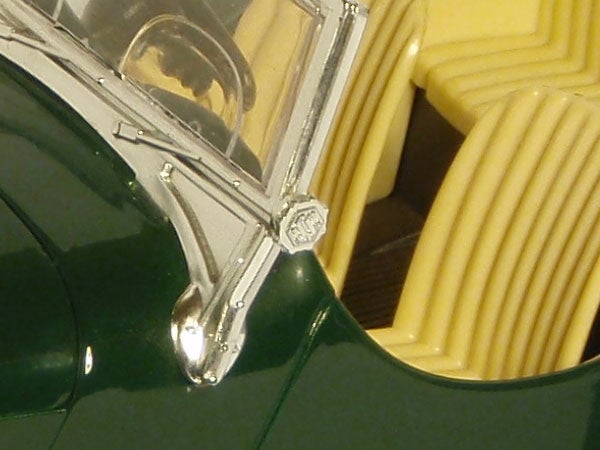
Similar results at 100 ISO.
—-
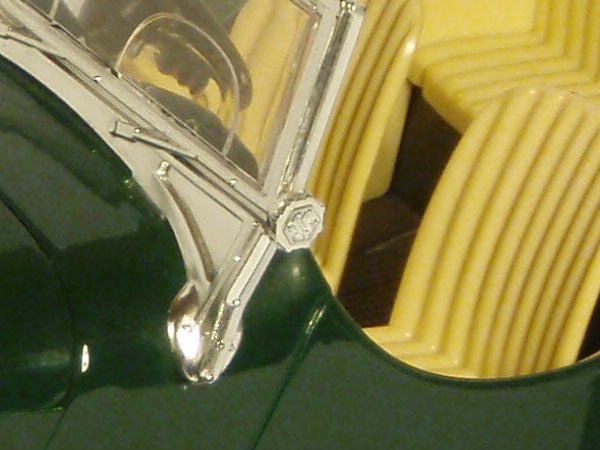
There is some visible noise at 200 ISO, but it is not enough to cause problems.
—-
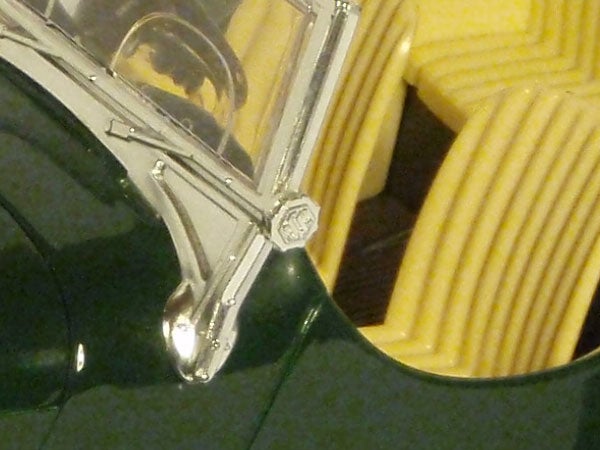
The noise level is higher at 400 ISo, but the image is still printable.
—-
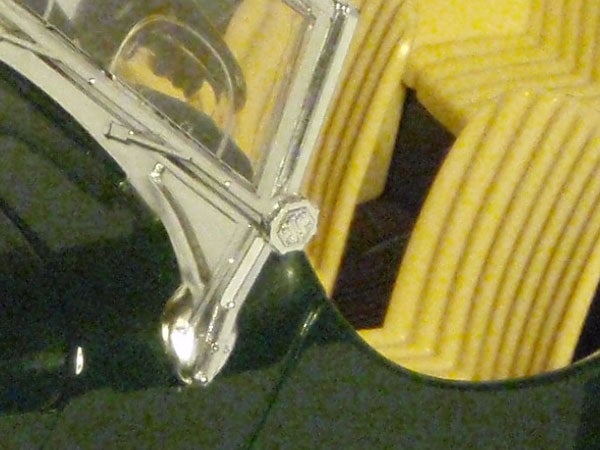
There is a large increase in noise going up to 800 ISO, but overall colour balance is still fairly good, and the image is usable – just.
—-
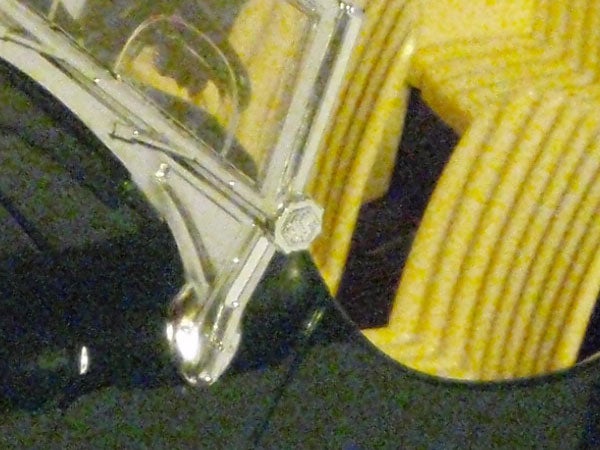
Image quality is seriously affected at the maximum 1600 ISO, with faded colour and low detail.
—-
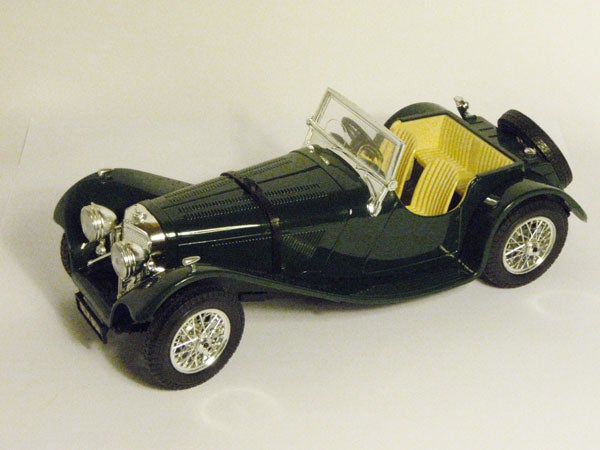
This is the full frame at 1600 ISO.
—-
”A range of general test shots are shown over the next two pages. In some cases, the full size image has been reduced for bandwidth purposes, and a crop taken from the original full resolution image has been placed below it to show the overall image quality. Some other pictures may be clicked to view the original full-size image.”
—-
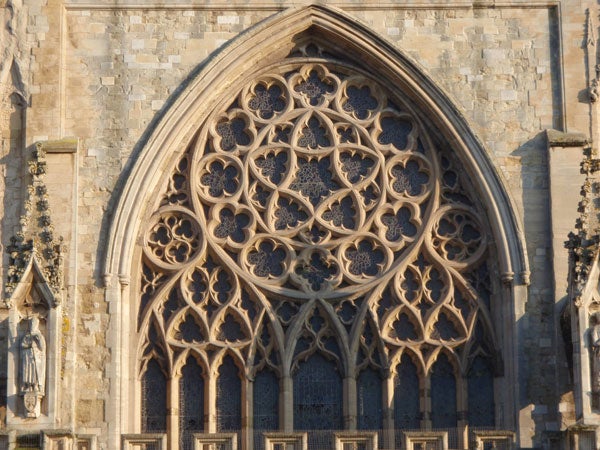
Here’s my usual detail test shot of the West Window of Exeter Cathedral, for you to compare with other cameras. See below for a full res crop, or click to see the whole picture. Please note that this shot was taken at the HQ quality setting, rather than the highest SHQ setting. If I get the chance I’ll re-shoot tomorrow and upload new pictures.
—-
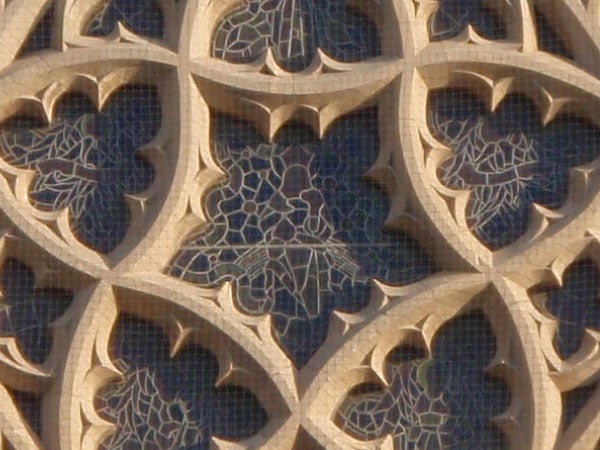
Even at the HQ setting, the level of detail is extremely good for a 7MP camera.
—-
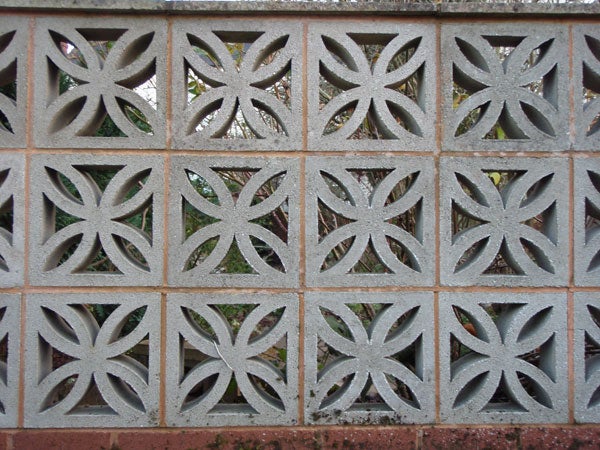
The lens produces virtually zero barrel distortion at wide angle, although the corners are a bit soft.
—-
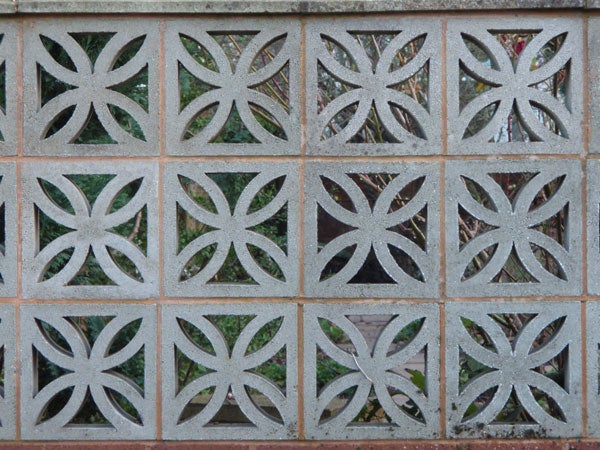
This was shot at the telephoto end of the zoom, and shows no pincushion distortion.
”A range of general test shots are shown over the next two pages. In some cases, the full size image has been reduced for bandwidth purposes, and a crop taken from the original full resolution image has been placed below it to show the overall image quality. Some other pictures may be clicked to view the original full-size image.”
—-
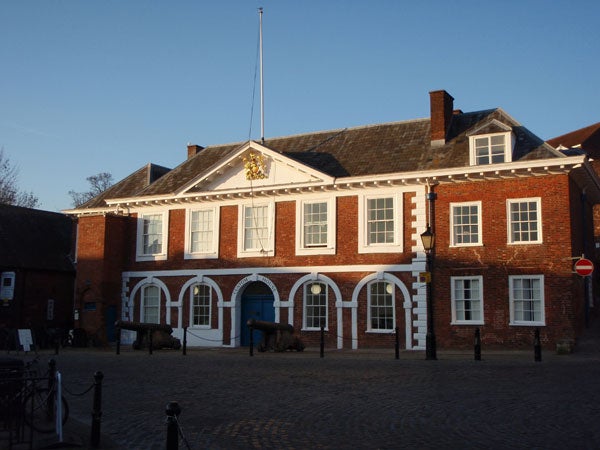
The mju 790 SW has a typical zoom range for a 3x compact, with a wide end equivalent to 38mm.
—-
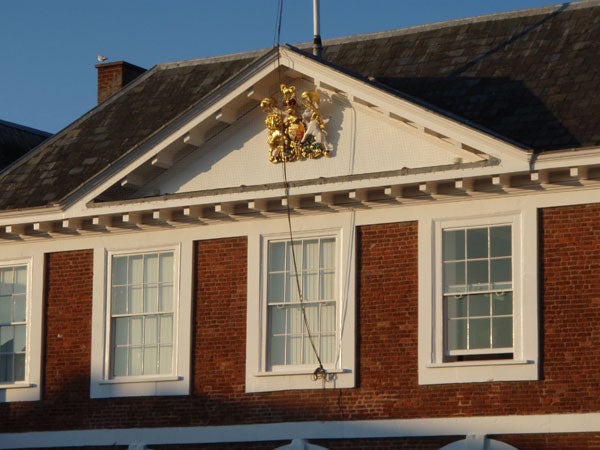
The telephoto end is equivalent to 114mm, again typical for a 3x zoom camera.
—-
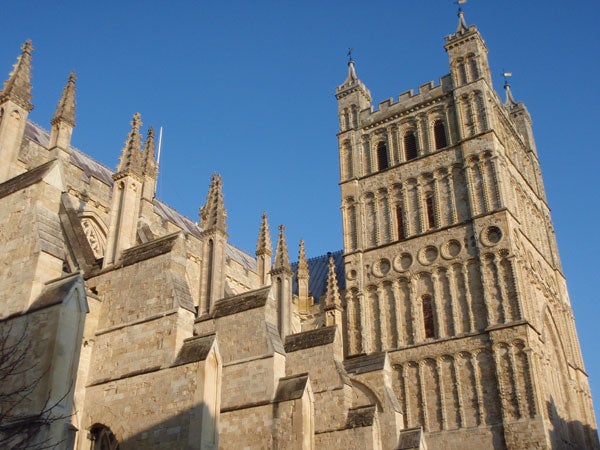
Colour rendition and exposure are both very good.
—-
Trusted Score
Score in detail
-
Value 6
-
Image Quality 8
Features
| Camera type | Digital Compact |
| Megapixels (Megapixel) | 7.1 Megapixel |
| Optical Zoom (Times) | 3x |

